Modern Teaching Handbook
Master modern education with the all-in-one resource for educators. Get your free copy now!
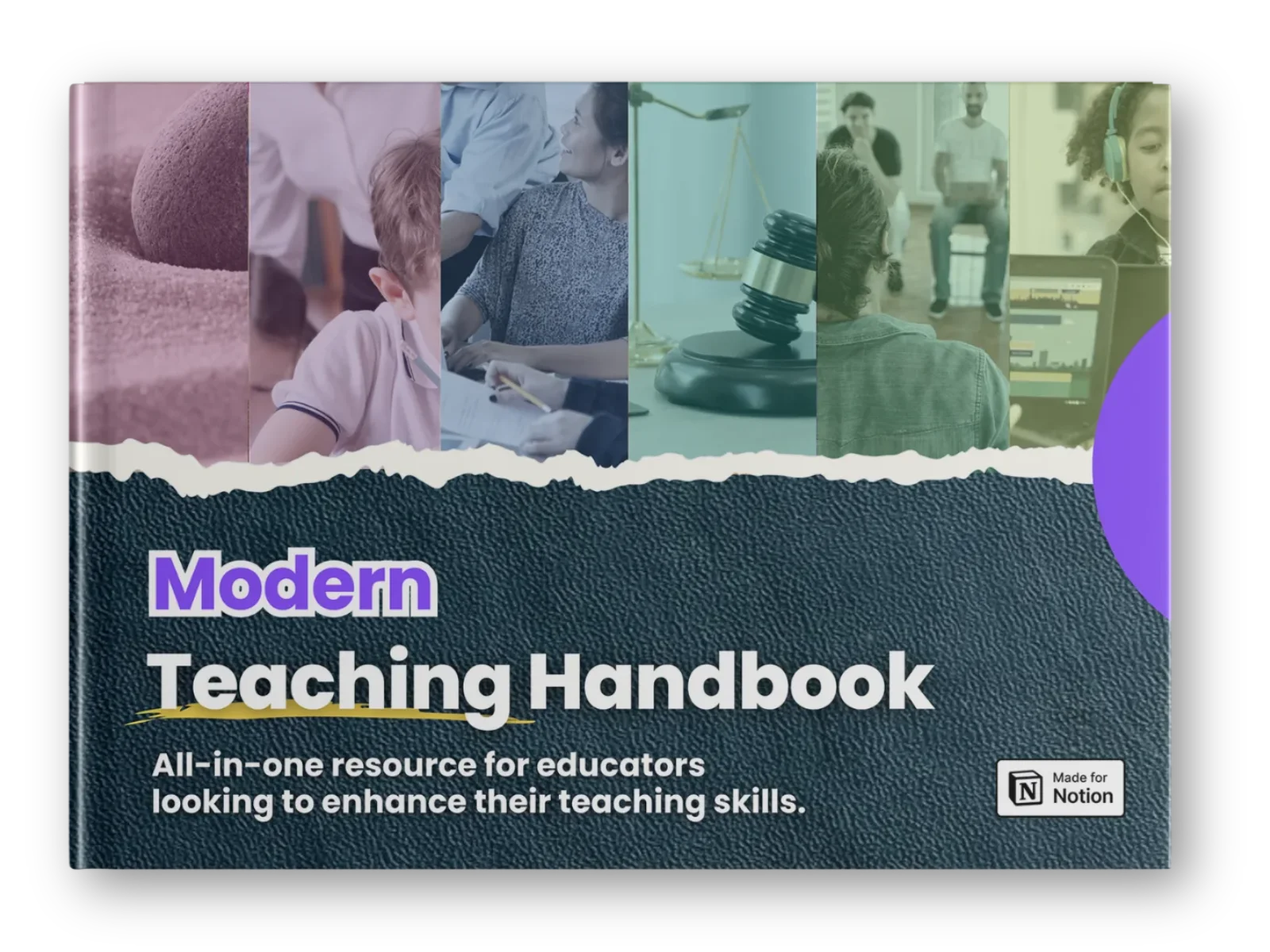


School Physical Security: Complete Planning Guide
School Physical Security: Complete Planning Guide
School Physical Security: Complete Planning Guide

Article by
Milo
ESL Content Coordinator & Educator
ESL Content Coordinator & Educator
All Posts
Imagine this: a school campus bustling with students laughing, learning, and thriving. Now, imagine the level of responsibility needed to ensure that every single person in that space feels secure. Physical security in schools is no longer a “nice-to-have”; it’s an absolute necessity in today’s world. Why? Because schools are more than just educational institutions; they’re communities where safety is paramount for creating an environment conducive to learning.
Imagine this: a school campus bustling with students laughing, learning, and thriving. Now, imagine the level of responsibility needed to ensure that every single person in that space feels secure. Physical security in schools is no longer a “nice-to-have”; it’s an absolute necessity in today’s world. Why? Because schools are more than just educational institutions; they’re communities where safety is paramount for creating an environment conducive to learning.
Modern Teaching Handbook
Master modern education with the all-in-one resource for educators. Get your free copy now!

Modern Teaching Handbook
Master modern education with the all-in-one resource for educators. Get your free copy now!

Modern Teaching Handbook
Master modern education with the all-in-one resource for educators. Get your free copy now!

Importance of School Physical Security in Today’s World
The Changing Landscape of School Safety
Today's world poses new challenges for school security. While schools have always dealt with safety concerns—like fire drills and first-aid emergencies—the modern landscape includes concerns about everything from unauthorized intrusions to violent incidents.
Why has this become such a big focus?
Increased Awareness of Threats: Incidents ranging from vandalism to more severe crises have highlighted vulnerabilities in school infrastructure.
Complex School Designs: Modern schools often have sprawling campuses, multiple entry points, and shared facilities, making it harder to monitor and control access.
Higher Stakes: With hundreds, sometimes thousands of students and educators in one place, schools are high-stakes environments that demand proactive security measures.
In short, safety isn’t just an abstract idea anymore—it’s a daily priority.
Why Physical Security Goes Beyond Locks and Cameras
When you think “physical security,” what comes to mind? A locked door? Maybe a security camera perched in a hallway? Those are certainly key parts of the equation, but effective school security goes much deeper. The goal isn’t just to respond to issues—it’s to prevent them altogether.
Here’s why robust physical security is so important:
Protecting People: Students and staff need to feel safe in order to focus on learning and teaching, respectively.
Building Confidence: A secure school creates peace of mind for parents and guardians, knowing their children are in good hands.
Minimizing Disruptions: A well-protected environment means fewer interruptions, whether they come from small incidents like trespassing or larger crises.
Serving as a Deterrent: Strong security measures can discourage potential intruders or wrongdoers before they even make a move.
Take this example: a clearly marked checkpoint at a school entrance might seem minor, but it signals to everyone entering the campus that safety is taken seriously. That visible reminder often works as a psychological barrier for anyone with bad intentions.
Balancing Security with a Welcoming Environment
Here’s the tricky part: schools have to strike a balance between being welcoming spaces for students and families while still maintaining airtight security protocols. Nobody wants a school to feel like a fortress, right?
Some schools get creative:
Using landscaping (like hedges or fences) to frame paths and subtly guide people where they need to go.
Installing visitor management systems at the front office that are high-tech but approachable.
Training staff to remain vigilant while still cultivating a friendly demeanor for families and visitors.
The key is to make sure these measures don’t disrupt the school’s primary purpose: education. Students should see their school as a place of opportunity, not as a place where they’re constantly reminded of threats.
Wrapping It Up
The importance of physical security in schools can’t be overstated. It’s a foundation for everything else—learning, teaching, socializing, and growing. Whether it’s preventing unauthorized access, deterring threats, or just creating peace of mind, every effort matters.
So, the next time you walk by a school’s entry gate, or notice a camera in a hallway, remember: it's not just about technology. It’s about protecting a community and shaping a future where safety and education go hand in hand.
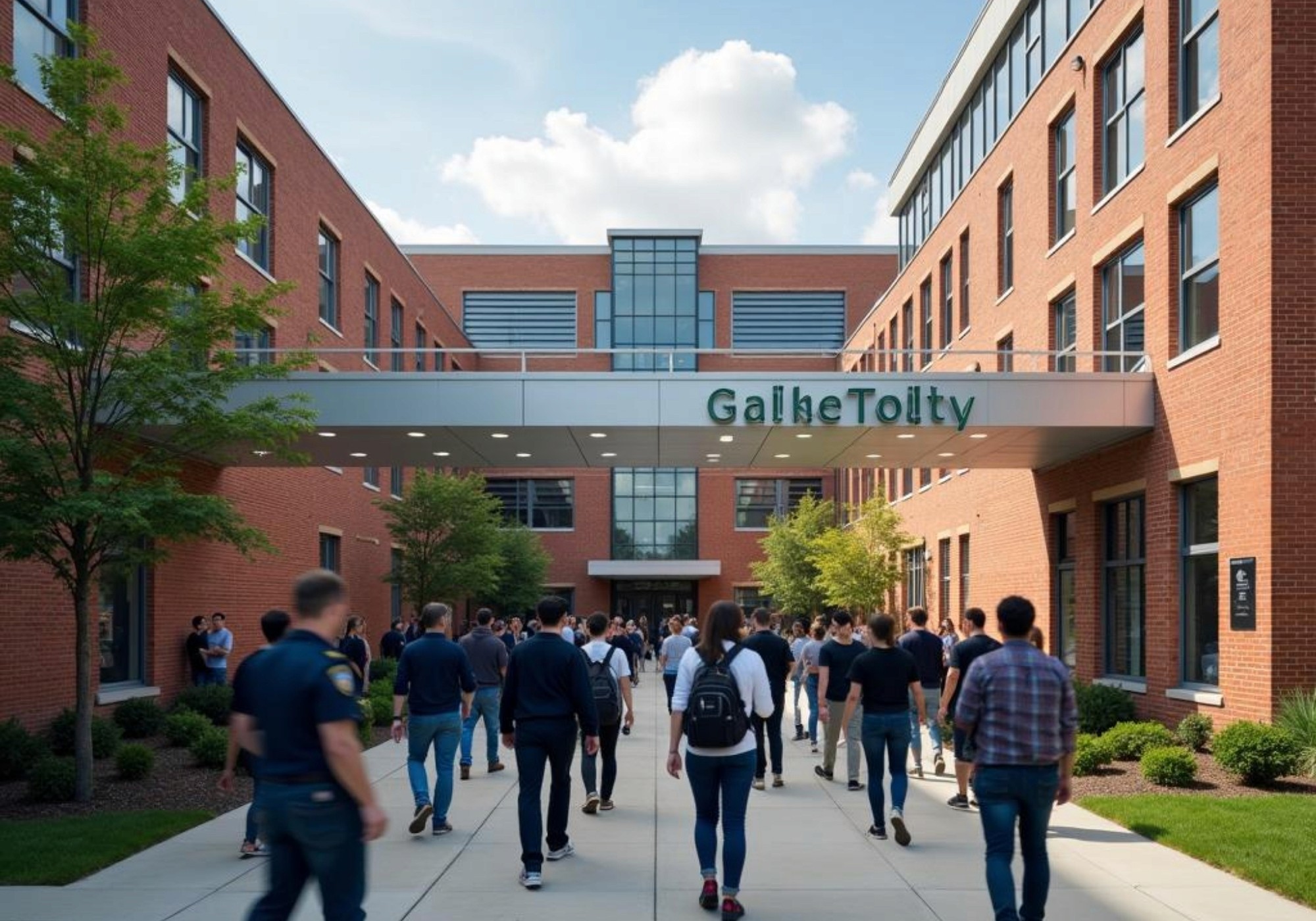
Risk Assessment: Identifying Potential Threats
Imagine walking into a school where everyone feels safe, from the students to the teachers. That sense of safety doesn’t just happen by chance—it’s the result of planning and preparation. The first step in creating a secure school? A thorough risk assessment. Think of it like building a sturdy foundation before constructing a house. You can’t protect the school community if you don’t know what you're protecting it from.
What Is a Risk Assessment, and Why Is It Essential?
A risk assessment is all about identifying potential threats and vulnerabilities in a school's physical environment. You’re essentially playing detective by asking, "What could go wrong here?" Then, you figure out how likely those scenarios are and how severe the impact would be.
For example:
Could an unmonitored side door allow unauthorized access to the school?
Are there areas on campus where visitors can move unnoticed?
What happens if students have to evacuate in an emergency—are there enough clear exits?
Without this step, security can turn into guesswork, and that's a gamble no one wants to take when lives and safety are on the line.
Types of Threats Schools Should Watch For
Schools face a wide range of potential threats, which typically fall into a few main categories. Knowing these makes it easier to tailor security measures.
1. Internal Threats
Sometimes, risks come from within. These could involve:
Bullying or fights among students escalating into physical altercations.
Vandalism or theft of school property.
A disgruntled student or staff member causing harm.
2. External Threats
These come from individuals or circumstances outside the school:
Intruders who aren’t supposed to be on campus.
Burglaries targeting expensive school equipment like computers or lab tools.
Weather-related emergencies, like storms or floods, which can compromise the physical safety of the school building itself.
3. Active Threats
Although rare, situations involving active shooters or other forms of violence are among the most serious concerns. Tailored plans for these scenarios are essential.
4. Accidental Hazards
Not all threats involve deliberate harm. Accidents can happen:
A chemical spill in the science lab.
Electrical malfunctions that could cause fires.
Slip-and-fall hazards, especially in high-traffic areas like stairwells or hallways.
How Schools Can Perform a Risk Assessment
Thankfully, you don’t need a crystal ball to predict threats. A systematic approach works wonders:
Evaluate the Physical Layout: Walk through the entire campus—from entry points and hallways to playgrounds and fences. Look for areas where visibility is poor, doors are left unlocked, or barriers are easy to breach.
Talk to the People Who Know the Space Best: Teachers, maintenance staff, and even students can help point out blind spots you might miss. ("That stairwell where the light’s always broken? It’s a hotspot for trouble.")
Use Data: Review past incidents at your school or similar ones. Patterns often reveal where to focus.
Involve Experts: Security consultants or local law enforcement can assess the property with a fresh set of eyes.
Prioritize the Risks: Not everything can be fixed at once. Rank threats based on their likelihood and impact, and tackle the most pressing ones first.
Why It’s a Work in Progress
One last thing to remember: a risk assessment isn’t "set it and forget it." It’s more like a living document. Schools change—new buildings go up, security technology evolves, and fresh challenges emerge. A yearly review (or after any major incident) keeps the assessment relevant and useful.
A solid risk assessment doesn’t just help a school act more decisively in emergencies. It sends a clear message: “We’re serious about protecting our people.” Up next, let’s talk about the physical measures schools can take to create an even stronger line of defense.
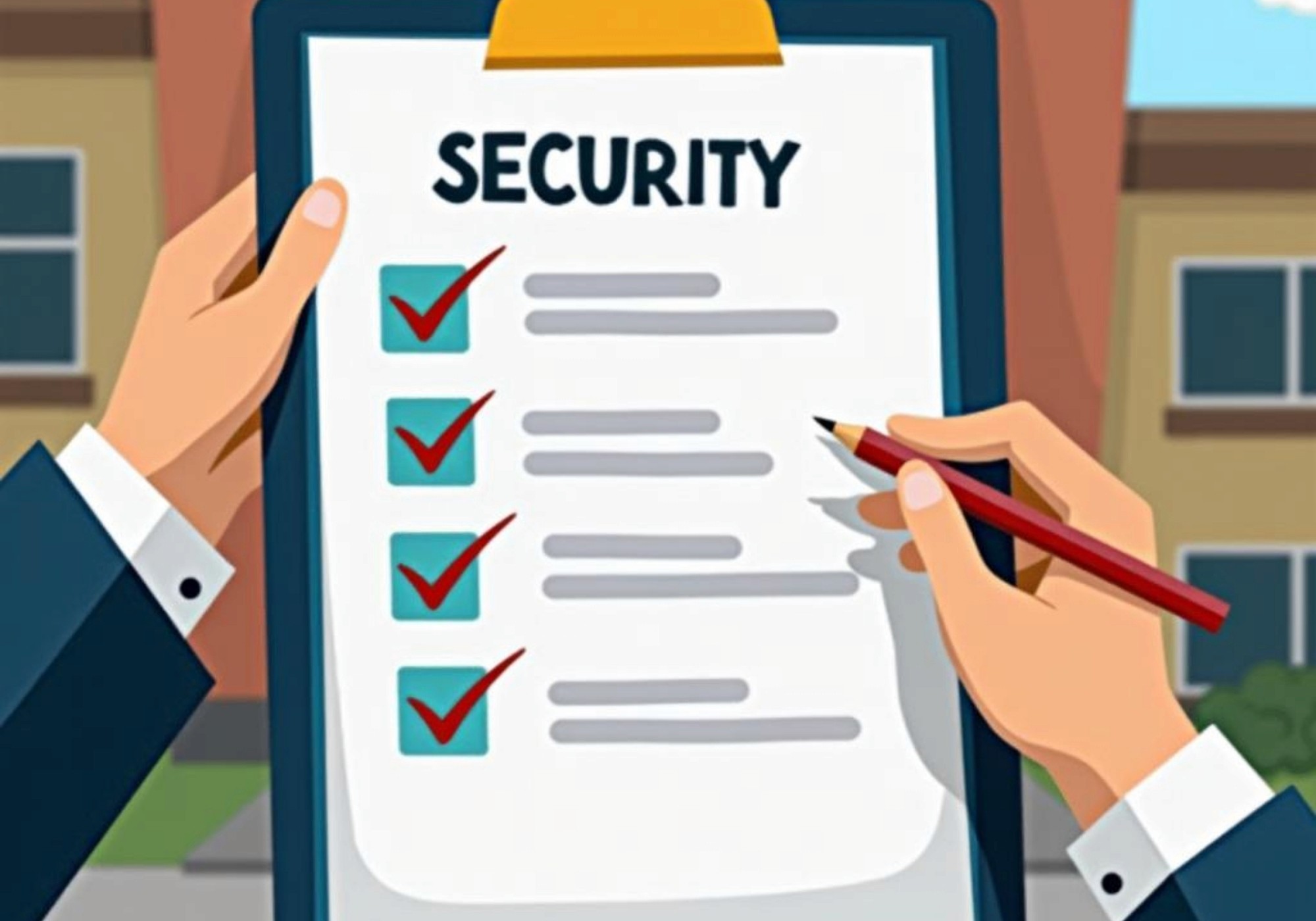
Key Physical Security Measures for Schools
Imagine walking into a school where doors are left wide open, hallways are dimly lit, and there’s no way to keep track of who comes and goes. Sounds unsettling, right? That’s why physical security measures are mission-critical in schools—it’s about keeping students and staff safe while fostering a welcoming learning environment. Let’s dive into what makes a school’s physical security effective.
Entryways: The First Line of Defense
School entrances and exits are like the gates to a castle; they need to be fortified. Securing these access points is one of the easiest ways to prevent unauthorized entry.
Locked Doors and Controlled Access: All exterior doors should stay locked during school hours, except for designated entry points. You don’t need a steel fortress, but sturdy doors paired with proper locking mechanisms work wonders.
Visitor Check-In Systems: Picture this: a parent shows up unexpectedly to drop off forgotten homework. A visitor management system ensures they stop by a front desk, show ID, and sign in before heading anywhere else.
Video Doorbells or Intercoms: For schools with stricter policies, installing video doorbells or intercoms is a win. Office staff can verify who’s at the door without letting anyone in blind.
Surveillance: Eyes Everywhere (Within Reason)
Cameras are your silent security guards. They don’t talk back or need coffee breaks, but they’re incredible at monitoring suspicious activity.
Strategic Placement: You don’t want cameras stuck in random places, like above a vending machine. Key areas include main entrances, hallways, cafeterias, and playgrounds. The goal? Maximize coverage without invading students' privacy.
Live Monitoring: Have someone keeping an eye on the feed in real-time, especially during peak times like arrival and dismissal. If anything unusual happens, help can be dispatched immediately.
Decals and Warnings: Did you know just seeing a “This area is under surveillance” sticker can deter unwanted behavior? Sometimes, it’s the little things that pack the biggest punch.
Lighting: A Simple but Overlooked Hero
No one likes lurking in the dark, and that includes both students and wrongdoers. Adequate lighting is essential for visibility and safety.
Outdoor Lighting: Bright, consistent lighting in parking lots, entrances, and walkways discourages loitering and makes staff feel safer heading home after hours.
Indoor Safety Lights: Hallways and stairwells should have steady lighting, even in emergency power situations. This keeps panic low and order high during drills or real emergencies.
Physical Barriers: Defining Boundaries
Sometimes, a physical boundary is all it takes to stop an intruder from advancing further on campus.
Fencing and Gates: Perimeter fencing isn’t just for show. It defines where the public area ends and where the private school zone begins.
Locking Classrooms: A locked classroom door can physically slow down or stop an intruder, buying invaluable time for students and staff. In fact, lockable doors have been proven lifesavers in numerous emergency scenarios.
Regular Maintenance: An Underappreciated MVP
Security measures are only as good as their upkeep. A rusty lock or broken camera won’t do the job.
Create a system to check locks, cameras, and lights regularly. Broken equipment should be repaired or replaced immediately.
Hold periodic walkthroughs with staff to identify vulnerabilities. A fresh set of eyes may catch what others missed.
Physical security measures may sound like boring logistics at first, but when you break them down, they’re just common-sense tools that work together to protect everyone in a school. By focusing on areas like access control, visibility, and boundary setting, schools can create a safe space where learning thrives. Ready to hear about what happens when it’s time to prepare for emergencies? Let’s dive in next!
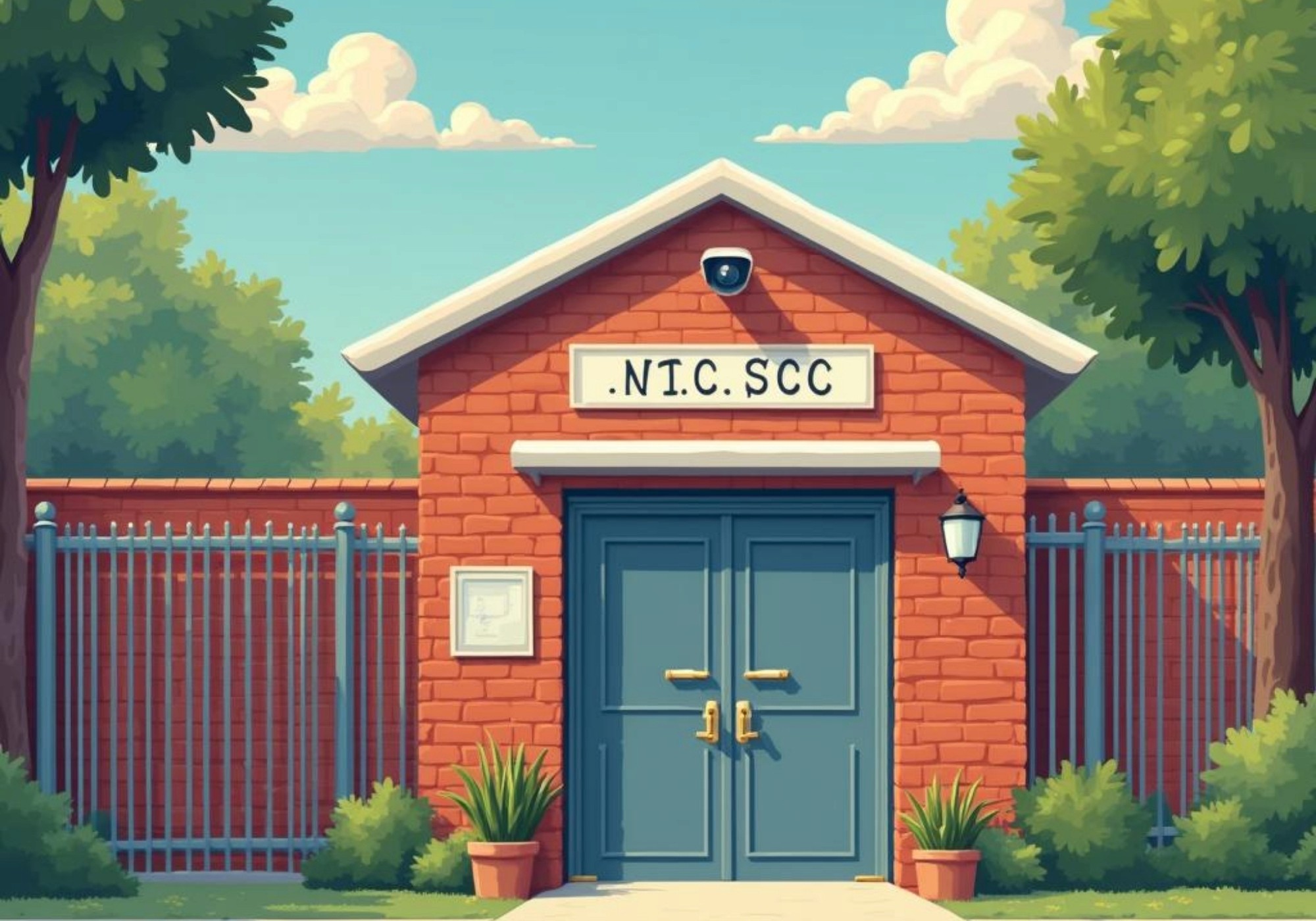
Access Control Systems: Strengthening Campus Entry Points
Ever tried to enter a secure building and been denied access because you didn’t have the right credentials? Annoying, but effective, right? That same principle can and should apply to schools—but with even more precision and care. Access control systems are the first line of defense in ensuring that only authorized individuals can enter a school campus. Let’s dive into how these systems can make our schools safer.
Why Access Control Matters
Picture this: A school building bustling with activity, dozens of doors, and people constantly coming and going. Without a robust access control system, how do administrators know who belongs there and who doesn’t? Exactly—they don’t. That’s where the magic of access control steps in.
By limiting entry to verified individuals—students, staff, and pre-approved visitors—schools can drastically reduce the chances of unauthorized access. This means protecting everyone inside, plain and simple. It doesn’t just add an extra layer of security; it also gives peace of mind to parents, students, and staff.
Types of Access Control Systems
Not all access control systems are created equal. Each school has unique needs, and choosing the right system is key. Here’s a breakdown of some commonly used types:
Keycards or Badges: The practical and popular option. Students and staff carry ID cards that double as access keys.
Bonus: These can also serve as official photo IDs—two birds, one stone!
Keypad Entry: Entering a PIN to unlock doors. Simple and straightforward, but you'd better keep that code hush-hush.
Biometric Scanners: Think sci-fi—fingerprint or facial recognition technology. These systems make it nearly impossible for intruders to fake their way in.
Intercom and Video Systems: Installed at main entrances, these systems allow office staff to visually confirm a visitor’s identity before buzzing them in.
Each system has its pros and cons. Keypads, for instance, may require frequent code changes to maintain security, while biometric systems are expensive but foolproof.
Best Practices for Campus Entry Points
It’s not just about having fancy technology; how we use access control systems matters just as much. Here are some practical tips for schools:
Consolidate Entry Points: Limit daily access to just a few doors. This makes monitoring more manageable.
Require Proper Identification: Everyone entering should show proper credentials—whether it’s a keycard, a badge, or visitor approval.
Conduct Routine System Audits: Test the system regularly to catch any flaws or malfunctions before they become an issue.
Enforce Visitor Check-Ins: Even Uncle Bob coming to drop off lunch needs to sign in, whether through a front desk or a digital visitor management system.
Real-World Example
A middle school in Florida implemented a biometric access control system, requiring staff and students to scan their fingerprints to enter. Soon after, an attempt by an unauthorized individual to enter using someone else's stolen ID was thwarted. The system flagged the mismatch, instantly alerting school security. That’s a win for everyone involved—except the intruder, of course.
Access control is not just about locking doors; it’s about unlocking safety. When schools invest in these systems and use them wisely, they create a more secure environment where learning can thrive. Next time you see one of those video buzz-ins or ID card systems, take a second to appreciate how they’re quietly helping keep everyone safe!
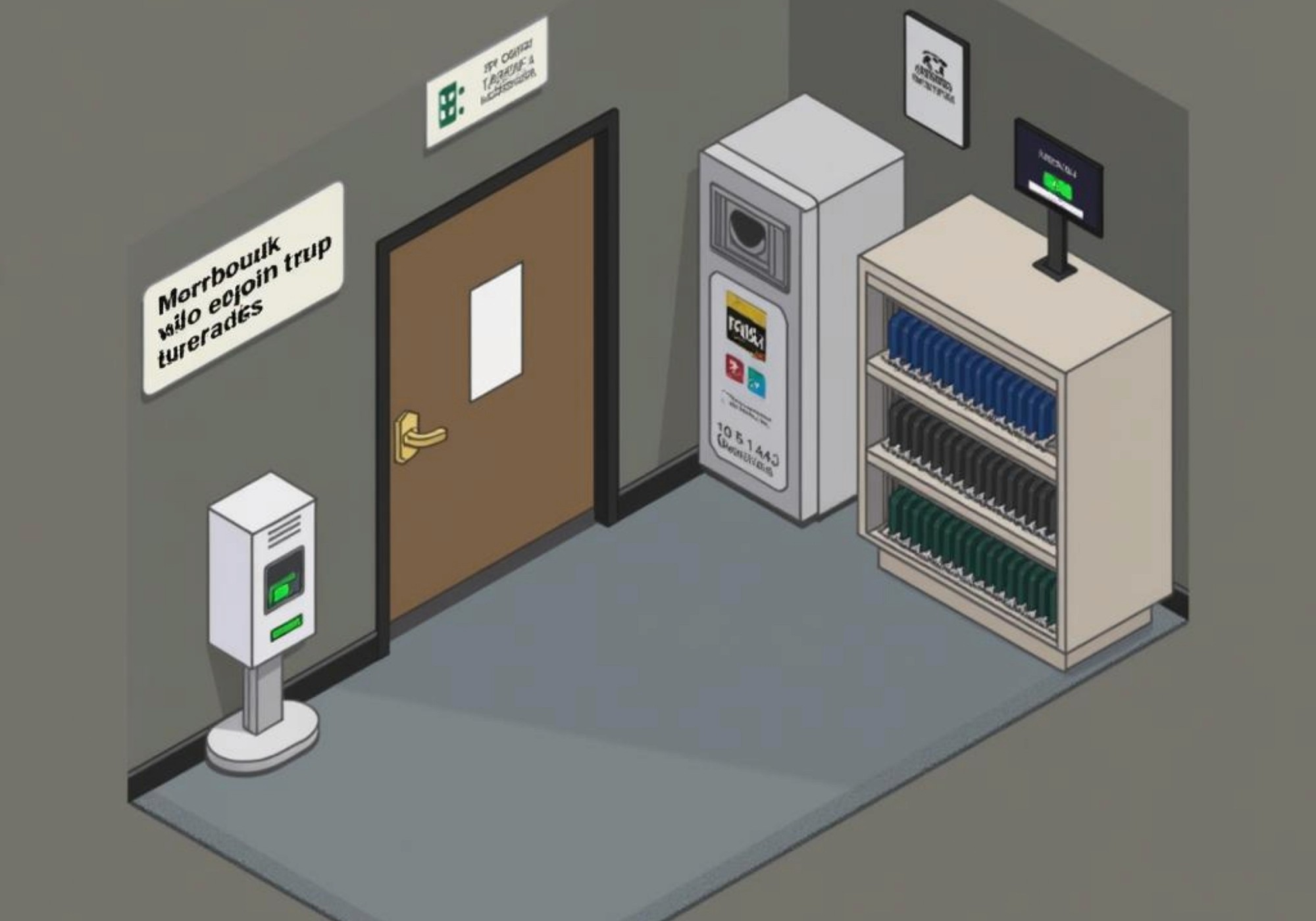
Emergency Preparedness and Response Plans
What if the Unthinkable Happens?
Here’s a sobering thought: emergencies don’t knock before they arrive. Whether it's a fire, severe weather, or the rare but terrifying prospect of an active shooter, schools must be ready for anything. A thorough, well-practiced emergency preparedness and response plan could mean the difference between chaos and safety. It’s not about scaring students and staff—it’s about empowering them with the tools they need to stay calm and act wisely when every second counts.
Building a Strong Foundation
Emergency plans don’t just appear out of thin air. They require careful thought, team collaboration, and, most importantly, ongoing updates. Here’s how schools can start building a solid foundation for emergency preparedness:
Conduct Risk Assessments
This is step one. Schools need to identify potential risks specific to their location and community. For example:Is your school in an area prone to tornadoes or hurricanes?
Are nearby businesses or facilities potential safety risks?
Has there been a history of break-ins, threats, or violence in the region?
Answering these questions allows schools to create detailed and relevant plans tailored to the specific challenges they might face.
Assemble an Emergency Team
A diverse emergency planning team ensures nothing is overlooked. This group might include:School administrators
Teachers
Facility managers
A school nurse or counselor
They’re the brains behind drafting strategies for various scenarios and ensuring everyone knows their roles.
Actionable Emergency Protocols
An emergency plan should be clear and practical—none of this “all theory, no action” business. It should outline specific steps, assign roles, and leave little room for ambiguity when crisis strikes.
Evacuation Plans
Think fire drills, but expanded. Where do students and staff go? What’s the quickest and safest route? Keep evacuation routes posted in every classroom. Bonus tip: practice evacuation routes with different variables, like blocked doors, to ensure flexibility.Lockdown Procedures
Every school needs well-rehearsed lockdown steps in case of internal threats. Keep it simple:Lock the door.
Turn off lights.
Move everyone away from windows and hide silently.
Remember, silence can play a key role in safety!
Communication Strategies
During emergencies, communication can make or break the response. Schools should:
Use SMS or app-based alert systems to notify parents instantly.
Equip staff with walkie-talkies for on-campus updates.
Establish hand signals in scenarios requiring silence.
Practice Makes Perfect
Let’s face it: nobody really likes drills. But they can save lives. Regular practice is essential for making emergency responses second nature. Incorporate these tactics:
Unannounced Drills: Mix them in with scheduled training. This helps everyone stay sharp and ready for surprises.
Role-playing Different Scenarios: Run unique scenarios to ensure preparedness for any situation—fire one week, severe weather the next, and maybe even a bomb threat drill another day.
Keeping Everyone in the Loop
Education isn’t just about students. Parents, too, need to understand emergency plans. Schools can hold information sessions, send home printed guides, or even produce short videos explaining the basics. When everyone works together, the entire community becomes the first line of defense.
And let’s not forget about the psychological factor. Stress and panic can take over if people aren’t mentally prepared. Use regular drills and discussions to build confidence and teach everyone—the shy and bold alike—that they have the power to make smart decisions in critical moments.
Wrapping it Up
Creating an emergency preparedness plan isn’t a "set it and forget it" project. It’s a living, breathing document. Schools must continually refine it and adapt as new challenges emerge. The more proactive they are today, the safer the entire school community will be tomorrow.
So remember: preparation isn’t just about having a plan on paper—it’s about putting it into action, practicing it, and empowering everyone involved. Ready to take the first step?
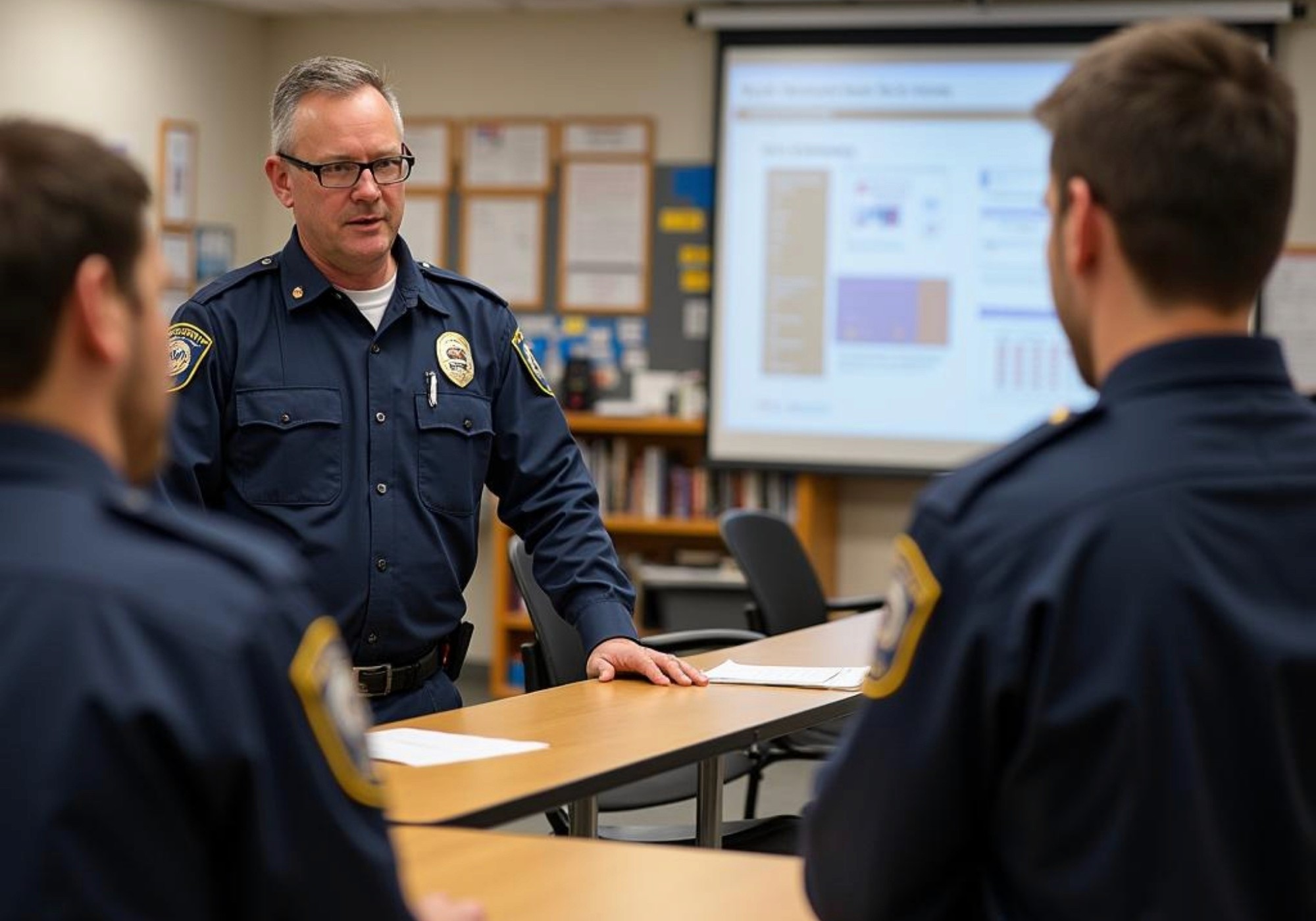
Collaborating with Local Law Enforcement and Security Experts
Imagine this: a concerned parent notices a suspicious individual near the school gate and immediately informs the authorities. Within minutes, local law enforcement is on-site, resolving the situation before it develops further. This kind of swift action isn’t just luck—it’s the result of a strong partnership between schools and security experts. Collaboration with local law enforcement and security professionals is a cornerstone of creating a safe learning environment. Let’s dive into why this relationship matters and how it works best.
Why Schools Need Law Enforcement Support
Schools are busy, bustling environments with endless moving parts. Teachers focus on education, administrators balance operations, and students? They’re out there just being kids. Add the ever-changing world of safety risks, and it’s clear schools can’t be expected to handle security alone. Enter local law enforcement.
Expertise in Crisis Management: Police are trained to respond to emergencies quickly and effectively—skills that schools alone might not have in-house.
Crime Prevention Knowledge: Officers can identify potential vulnerabilities, such as blind spots on campus or insufficient lighting, that might leave schools exposed to risks.
Community Relationships: Many officers already know students, families, and staff through community events, building trust that enhances school safety efforts.
This partnership isn’t about creating a constant police presence on campus—it’s about leveraging expertise to prevent issues and respond to emergencies smarter and faster.
Building a Collaborative Plan
So, how can schools and law enforcement join forces effectively? Simple: have a plan, stick to it, and make everyone an active participant.
Start with Clear Communication: Set up regular meetings between school administrators and law enforcement to discuss potential threats, past incidents, and new strategies for prevention.
Create Emergency Protocols Together: Law enforcement can assist schools in drafting tailored response plans for specific scenarios, from fire evacuations to intruder lockdowns. This ensures plans are realistic and actionable.
Practice Makes Perfect: Conduct joint drills involving staff, students, and local officers. For instance, organizing a mock lockdown can prepare the entire school community while giving officers a realistic sense of site logistics.
Security Experts: Beyond the Police
While law enforcement is vital, working with independent security professionals can also enhance campus safety. These experts specialize in physical security measures, like designing efficient access control systems or installing discreet surveillance cameras. They’re your go-to for tightening gaps in school infrastructure.
They can recommend the latest technologies—think facial recognition systems or panic button apps—that are both effective and cost-efficient.
Security consultants often conduct detailed risk assessments, identifying threats that a school staff member might not even think to consider.
A blend of law enforcement expertise and advice from security professionals ensures no stone is left unturned in keeping students safe.
The Human Side of Partnership
Okay, let’s get real for a second—this isn’t just about drills and high-tech gadgets. Relationships matter here. Schools that actively invest in their partnerships with law enforcement end up fostering a sense of trust and community. Imagine Officer Bennett, who greets the kids outside the school gate once a week, exchanging high-fives with fifth graders. These connections remind everyone that safety isn’t just a policy—it’s a shared responsibility.
Wrapping It All Up
By teaming up with law enforcement and security experts, schools transform themselves into more than just learning hubs. They become fortified communities where students, staff, and parents feel confident and protected.
So, reach out, schedule that meeting, and don’t shy away from asking for advice. After all, in the fight for school security, teamwork really does make the dream work.
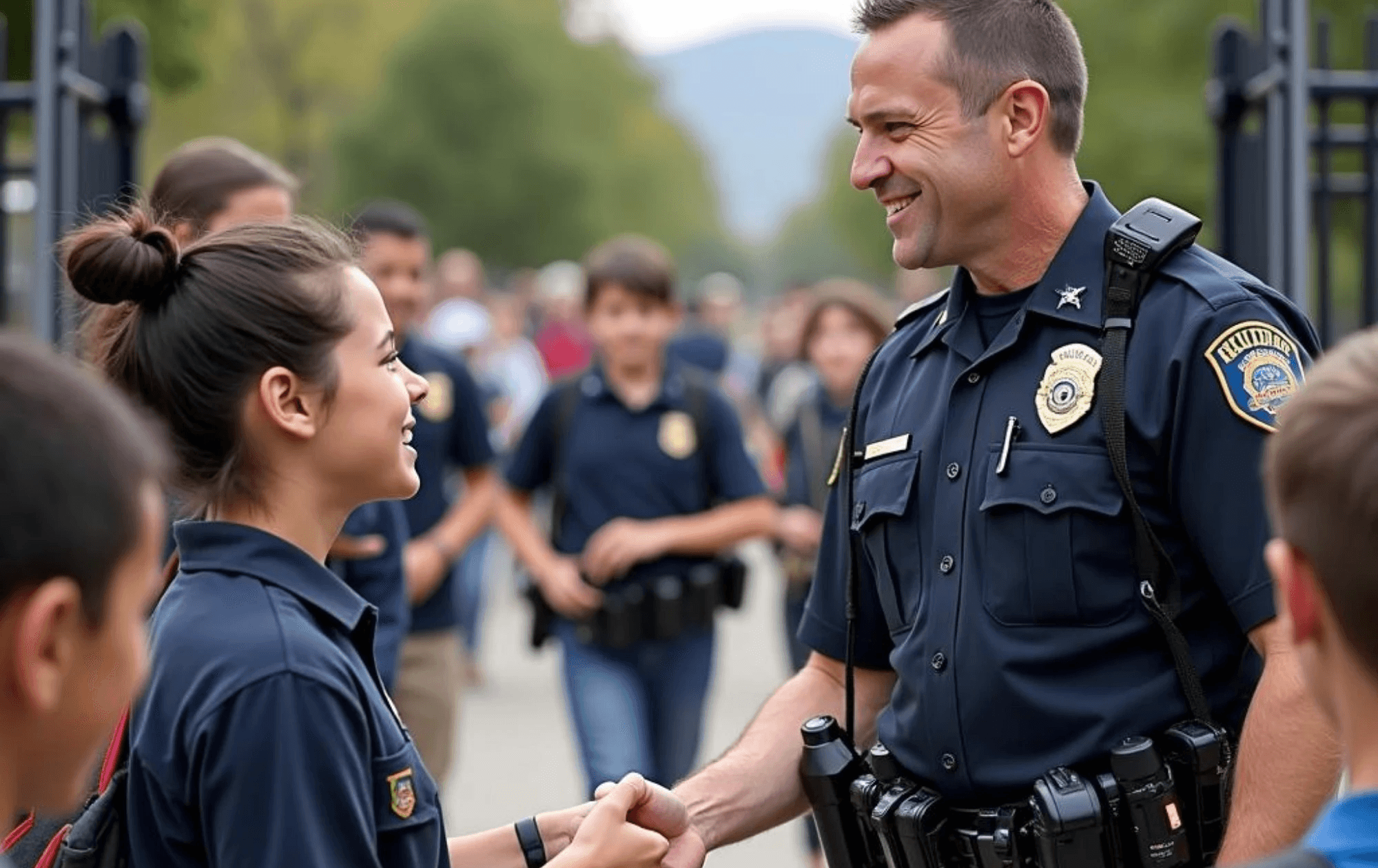
Educating Staff and Students on Security Protocols
Imagine this: a fire alarm blares unexpectedly, and while some students scramble under their desks in confusion, others start for the nearest exit, unsure of whether it’s even the safest route. Now, picture how much smoother (and safer) things would go if everyone already knew exactly what to do. That’s the power of education when it comes to security protocols—it equips people with clarity, confidence, and the ability to act quickly when it matters most.
Effective physical security measures aren’t just about cameras, locks, and alarms. The "human element" is a crucial piece of the puzzle. Without proper education, even the best security systems can fail at the worst possible moment.
Why Everyone Needs to Be “In the Loop”
Let’s face it: keeping a school secure is a team effort. You can’t rely solely on a handful of administrators or a security officer. Every person on campus—teachers, students, staff—plays a role in maintaining safety. Knowledgeable people are empowered people, and empowerment leads to better decision-making in emergencies.
Here are some key reasons why educating staff and students is essential:
Prevention: Knowing what to look for and how to report unusual activity can stop threats before they escalate.
Preparedness: Human response time is critical. Training ensures quicker decisions and smoother execution of emergency protocols.
Confidence Building: Fear can cause panic. Education provides a sense of control, reducing anxiety during high-stress situations.
Training for Staff: The Foundation of School Security
Teachers and school staff are often the first responders in any emergency, whether it’s a security threat or a natural disaster. Here’s how schools can effectively educate their staff:
Regular Drills and Simulations:
It’s not enough to read about emergency protocols in a binder. Staff need to practice them. Imagine a lockdown drill where teachers are guided through the steps of securing their classrooms. The more realistic, the better. (Pro tip: Include surprise drills occasionally. Life doesn’t give you a heads-up.)Workshops with Experts:
Security professionals and local law enforcement can provide valuable, real-world insights. For example, officers can teach situational awareness—how to spot potential threats and respond appropriately.Clear Communication Channels:
Staff need to know the hierarchy during emergencies. Who’s in charge of communication? How do they alert others? What’s the backup plan if systems fail? A solid grasp of these details can prevent chaos.
Educating Students: Making Safety Engaging and Relatable
Let’s be honest—lecturing students about security can feel like a snooze-fest if it’s not done right. The key is to keep it engaging. After all, these are the kids who can memorize an entire TikTok dance in one night! The same energy can be channeled into learning safety protocols.
Interactive Drills:
Instead of treating drills as an annoying routine, make them hands-on and challenging. For example, guide students in mapping out escape routes or assigning roles in small groups during fire or lockdown simulations.Age-Appropriate Lessons:
Younger students do well with simple, memorable instructions like “stop, hide, listen” for lockdowns.
Older students can handle more detailed discussions about the reasoning behind protocols and even contribute ideas to safety plans.
Empower Through Responsibility:
Assign leadership roles to students, like Fire Wardens or "Safety Captains." You’d be amazed how seriously kids take these titles. It gives them ownership over safety procedures and a sense of purpose.
Making Security Education Part of the School Culture
The goal is to create a culture where safety awareness feels like second nature, not just something tacked onto a training day. Here’s how schools can make that happen:
Daily Reminders: Post easy-to-read infographics around the campus with key security tips. For example, “See something, say something,” or “Stay calm, act fast.”
Celebrate Awareness: Host an annual “Safety Week” with fun activities, games, and talks centered on security. Think of it like Spirit Week, but with a mission!
Continuous Improvement: Gather feedback after drills and training sessions. What worked? What didn’t? Over time, refine the education process to make it more effective.
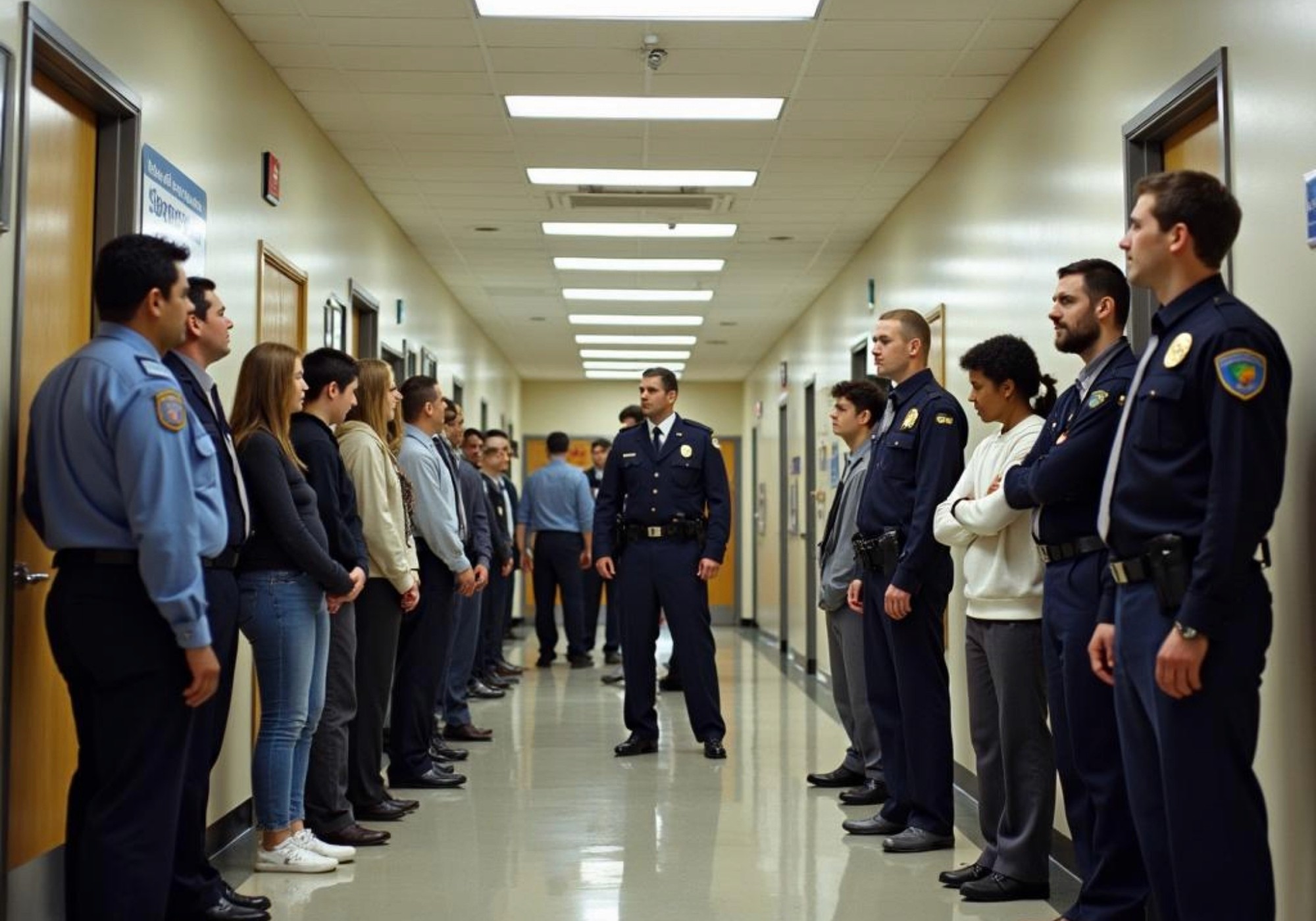
Wrapping It Up
Educating staff and students on security protocols doesn’t just help during emergencies—it fosters a stronger sense of community and responsibility in the school. Everyone plays a part, from the principal to the youngest kindergartener, and with the right mix of knowledge and practice, your school can handle challenges head-on.
And hey, if someone can teach an 8-year-old to remember the lyrics to a hundred songs in one week, surely they can learn how to exit a building calmly in an emergency. Right?
Importance of School Physical Security in Today’s World
The Changing Landscape of School Safety
Today's world poses new challenges for school security. While schools have always dealt with safety concerns—like fire drills and first-aid emergencies—the modern landscape includes concerns about everything from unauthorized intrusions to violent incidents.
Why has this become such a big focus?
Increased Awareness of Threats: Incidents ranging from vandalism to more severe crises have highlighted vulnerabilities in school infrastructure.
Complex School Designs: Modern schools often have sprawling campuses, multiple entry points, and shared facilities, making it harder to monitor and control access.
Higher Stakes: With hundreds, sometimes thousands of students and educators in one place, schools are high-stakes environments that demand proactive security measures.
In short, safety isn’t just an abstract idea anymore—it’s a daily priority.
Why Physical Security Goes Beyond Locks and Cameras
When you think “physical security,” what comes to mind? A locked door? Maybe a security camera perched in a hallway? Those are certainly key parts of the equation, but effective school security goes much deeper. The goal isn’t just to respond to issues—it’s to prevent them altogether.
Here’s why robust physical security is so important:
Protecting People: Students and staff need to feel safe in order to focus on learning and teaching, respectively.
Building Confidence: A secure school creates peace of mind for parents and guardians, knowing their children are in good hands.
Minimizing Disruptions: A well-protected environment means fewer interruptions, whether they come from small incidents like trespassing or larger crises.
Serving as a Deterrent: Strong security measures can discourage potential intruders or wrongdoers before they even make a move.
Take this example: a clearly marked checkpoint at a school entrance might seem minor, but it signals to everyone entering the campus that safety is taken seriously. That visible reminder often works as a psychological barrier for anyone with bad intentions.
Balancing Security with a Welcoming Environment
Here’s the tricky part: schools have to strike a balance between being welcoming spaces for students and families while still maintaining airtight security protocols. Nobody wants a school to feel like a fortress, right?
Some schools get creative:
Using landscaping (like hedges or fences) to frame paths and subtly guide people where they need to go.
Installing visitor management systems at the front office that are high-tech but approachable.
Training staff to remain vigilant while still cultivating a friendly demeanor for families and visitors.
The key is to make sure these measures don’t disrupt the school’s primary purpose: education. Students should see their school as a place of opportunity, not as a place where they’re constantly reminded of threats.
Wrapping It Up
The importance of physical security in schools can’t be overstated. It’s a foundation for everything else—learning, teaching, socializing, and growing. Whether it’s preventing unauthorized access, deterring threats, or just creating peace of mind, every effort matters.
So, the next time you walk by a school’s entry gate, or notice a camera in a hallway, remember: it's not just about technology. It’s about protecting a community and shaping a future where safety and education go hand in hand.

Risk Assessment: Identifying Potential Threats
Imagine walking into a school where everyone feels safe, from the students to the teachers. That sense of safety doesn’t just happen by chance—it’s the result of planning and preparation. The first step in creating a secure school? A thorough risk assessment. Think of it like building a sturdy foundation before constructing a house. You can’t protect the school community if you don’t know what you're protecting it from.
What Is a Risk Assessment, and Why Is It Essential?
A risk assessment is all about identifying potential threats and vulnerabilities in a school's physical environment. You’re essentially playing detective by asking, "What could go wrong here?" Then, you figure out how likely those scenarios are and how severe the impact would be.
For example:
Could an unmonitored side door allow unauthorized access to the school?
Are there areas on campus where visitors can move unnoticed?
What happens if students have to evacuate in an emergency—are there enough clear exits?
Without this step, security can turn into guesswork, and that's a gamble no one wants to take when lives and safety are on the line.
Types of Threats Schools Should Watch For
Schools face a wide range of potential threats, which typically fall into a few main categories. Knowing these makes it easier to tailor security measures.
1. Internal Threats
Sometimes, risks come from within. These could involve:
Bullying or fights among students escalating into physical altercations.
Vandalism or theft of school property.
A disgruntled student or staff member causing harm.
2. External Threats
These come from individuals or circumstances outside the school:
Intruders who aren’t supposed to be on campus.
Burglaries targeting expensive school equipment like computers or lab tools.
Weather-related emergencies, like storms or floods, which can compromise the physical safety of the school building itself.
3. Active Threats
Although rare, situations involving active shooters or other forms of violence are among the most serious concerns. Tailored plans for these scenarios are essential.
4. Accidental Hazards
Not all threats involve deliberate harm. Accidents can happen:
A chemical spill in the science lab.
Electrical malfunctions that could cause fires.
Slip-and-fall hazards, especially in high-traffic areas like stairwells or hallways.
How Schools Can Perform a Risk Assessment
Thankfully, you don’t need a crystal ball to predict threats. A systematic approach works wonders:
Evaluate the Physical Layout: Walk through the entire campus—from entry points and hallways to playgrounds and fences. Look for areas where visibility is poor, doors are left unlocked, or barriers are easy to breach.
Talk to the People Who Know the Space Best: Teachers, maintenance staff, and even students can help point out blind spots you might miss. ("That stairwell where the light’s always broken? It’s a hotspot for trouble.")
Use Data: Review past incidents at your school or similar ones. Patterns often reveal where to focus.
Involve Experts: Security consultants or local law enforcement can assess the property with a fresh set of eyes.
Prioritize the Risks: Not everything can be fixed at once. Rank threats based on their likelihood and impact, and tackle the most pressing ones first.
Why It’s a Work in Progress
One last thing to remember: a risk assessment isn’t "set it and forget it." It’s more like a living document. Schools change—new buildings go up, security technology evolves, and fresh challenges emerge. A yearly review (or after any major incident) keeps the assessment relevant and useful.
A solid risk assessment doesn’t just help a school act more decisively in emergencies. It sends a clear message: “We’re serious about protecting our people.” Up next, let’s talk about the physical measures schools can take to create an even stronger line of defense.

Key Physical Security Measures for Schools
Imagine walking into a school where doors are left wide open, hallways are dimly lit, and there’s no way to keep track of who comes and goes. Sounds unsettling, right? That’s why physical security measures are mission-critical in schools—it’s about keeping students and staff safe while fostering a welcoming learning environment. Let’s dive into what makes a school’s physical security effective.
Entryways: The First Line of Defense
School entrances and exits are like the gates to a castle; they need to be fortified. Securing these access points is one of the easiest ways to prevent unauthorized entry.
Locked Doors and Controlled Access: All exterior doors should stay locked during school hours, except for designated entry points. You don’t need a steel fortress, but sturdy doors paired with proper locking mechanisms work wonders.
Visitor Check-In Systems: Picture this: a parent shows up unexpectedly to drop off forgotten homework. A visitor management system ensures they stop by a front desk, show ID, and sign in before heading anywhere else.
Video Doorbells or Intercoms: For schools with stricter policies, installing video doorbells or intercoms is a win. Office staff can verify who’s at the door without letting anyone in blind.
Surveillance: Eyes Everywhere (Within Reason)
Cameras are your silent security guards. They don’t talk back or need coffee breaks, but they’re incredible at monitoring suspicious activity.
Strategic Placement: You don’t want cameras stuck in random places, like above a vending machine. Key areas include main entrances, hallways, cafeterias, and playgrounds. The goal? Maximize coverage without invading students' privacy.
Live Monitoring: Have someone keeping an eye on the feed in real-time, especially during peak times like arrival and dismissal. If anything unusual happens, help can be dispatched immediately.
Decals and Warnings: Did you know just seeing a “This area is under surveillance” sticker can deter unwanted behavior? Sometimes, it’s the little things that pack the biggest punch.
Lighting: A Simple but Overlooked Hero
No one likes lurking in the dark, and that includes both students and wrongdoers. Adequate lighting is essential for visibility and safety.
Outdoor Lighting: Bright, consistent lighting in parking lots, entrances, and walkways discourages loitering and makes staff feel safer heading home after hours.
Indoor Safety Lights: Hallways and stairwells should have steady lighting, even in emergency power situations. This keeps panic low and order high during drills or real emergencies.
Physical Barriers: Defining Boundaries
Sometimes, a physical boundary is all it takes to stop an intruder from advancing further on campus.
Fencing and Gates: Perimeter fencing isn’t just for show. It defines where the public area ends and where the private school zone begins.
Locking Classrooms: A locked classroom door can physically slow down or stop an intruder, buying invaluable time for students and staff. In fact, lockable doors have been proven lifesavers in numerous emergency scenarios.
Regular Maintenance: An Underappreciated MVP
Security measures are only as good as their upkeep. A rusty lock or broken camera won’t do the job.
Create a system to check locks, cameras, and lights regularly. Broken equipment should be repaired or replaced immediately.
Hold periodic walkthroughs with staff to identify vulnerabilities. A fresh set of eyes may catch what others missed.
Physical security measures may sound like boring logistics at first, but when you break them down, they’re just common-sense tools that work together to protect everyone in a school. By focusing on areas like access control, visibility, and boundary setting, schools can create a safe space where learning thrives. Ready to hear about what happens when it’s time to prepare for emergencies? Let’s dive in next!

Access Control Systems: Strengthening Campus Entry Points
Ever tried to enter a secure building and been denied access because you didn’t have the right credentials? Annoying, but effective, right? That same principle can and should apply to schools—but with even more precision and care. Access control systems are the first line of defense in ensuring that only authorized individuals can enter a school campus. Let’s dive into how these systems can make our schools safer.
Why Access Control Matters
Picture this: A school building bustling with activity, dozens of doors, and people constantly coming and going. Without a robust access control system, how do administrators know who belongs there and who doesn’t? Exactly—they don’t. That’s where the magic of access control steps in.
By limiting entry to verified individuals—students, staff, and pre-approved visitors—schools can drastically reduce the chances of unauthorized access. This means protecting everyone inside, plain and simple. It doesn’t just add an extra layer of security; it also gives peace of mind to parents, students, and staff.
Types of Access Control Systems
Not all access control systems are created equal. Each school has unique needs, and choosing the right system is key. Here’s a breakdown of some commonly used types:
Keycards or Badges: The practical and popular option. Students and staff carry ID cards that double as access keys.
Bonus: These can also serve as official photo IDs—two birds, one stone!
Keypad Entry: Entering a PIN to unlock doors. Simple and straightforward, but you'd better keep that code hush-hush.
Biometric Scanners: Think sci-fi—fingerprint or facial recognition technology. These systems make it nearly impossible for intruders to fake their way in.
Intercom and Video Systems: Installed at main entrances, these systems allow office staff to visually confirm a visitor’s identity before buzzing them in.
Each system has its pros and cons. Keypads, for instance, may require frequent code changes to maintain security, while biometric systems are expensive but foolproof.
Best Practices for Campus Entry Points
It’s not just about having fancy technology; how we use access control systems matters just as much. Here are some practical tips for schools:
Consolidate Entry Points: Limit daily access to just a few doors. This makes monitoring more manageable.
Require Proper Identification: Everyone entering should show proper credentials—whether it’s a keycard, a badge, or visitor approval.
Conduct Routine System Audits: Test the system regularly to catch any flaws or malfunctions before they become an issue.
Enforce Visitor Check-Ins: Even Uncle Bob coming to drop off lunch needs to sign in, whether through a front desk or a digital visitor management system.
Real-World Example
A middle school in Florida implemented a biometric access control system, requiring staff and students to scan their fingerprints to enter. Soon after, an attempt by an unauthorized individual to enter using someone else's stolen ID was thwarted. The system flagged the mismatch, instantly alerting school security. That’s a win for everyone involved—except the intruder, of course.
Access control is not just about locking doors; it’s about unlocking safety. When schools invest in these systems and use them wisely, they create a more secure environment where learning can thrive. Next time you see one of those video buzz-ins or ID card systems, take a second to appreciate how they’re quietly helping keep everyone safe!

Emergency Preparedness and Response Plans
What if the Unthinkable Happens?
Here’s a sobering thought: emergencies don’t knock before they arrive. Whether it's a fire, severe weather, or the rare but terrifying prospect of an active shooter, schools must be ready for anything. A thorough, well-practiced emergency preparedness and response plan could mean the difference between chaos and safety. It’s not about scaring students and staff—it’s about empowering them with the tools they need to stay calm and act wisely when every second counts.
Building a Strong Foundation
Emergency plans don’t just appear out of thin air. They require careful thought, team collaboration, and, most importantly, ongoing updates. Here’s how schools can start building a solid foundation for emergency preparedness:
Conduct Risk Assessments
This is step one. Schools need to identify potential risks specific to their location and community. For example:Is your school in an area prone to tornadoes or hurricanes?
Are nearby businesses or facilities potential safety risks?
Has there been a history of break-ins, threats, or violence in the region?
Answering these questions allows schools to create detailed and relevant plans tailored to the specific challenges they might face.
Assemble an Emergency Team
A diverse emergency planning team ensures nothing is overlooked. This group might include:School administrators
Teachers
Facility managers
A school nurse or counselor
They’re the brains behind drafting strategies for various scenarios and ensuring everyone knows their roles.
Actionable Emergency Protocols
An emergency plan should be clear and practical—none of this “all theory, no action” business. It should outline specific steps, assign roles, and leave little room for ambiguity when crisis strikes.
Evacuation Plans
Think fire drills, but expanded. Where do students and staff go? What’s the quickest and safest route? Keep evacuation routes posted in every classroom. Bonus tip: practice evacuation routes with different variables, like blocked doors, to ensure flexibility.Lockdown Procedures
Every school needs well-rehearsed lockdown steps in case of internal threats. Keep it simple:Lock the door.
Turn off lights.
Move everyone away from windows and hide silently.
Remember, silence can play a key role in safety!
Communication Strategies
During emergencies, communication can make or break the response. Schools should:
Use SMS or app-based alert systems to notify parents instantly.
Equip staff with walkie-talkies for on-campus updates.
Establish hand signals in scenarios requiring silence.
Practice Makes Perfect
Let’s face it: nobody really likes drills. But they can save lives. Regular practice is essential for making emergency responses second nature. Incorporate these tactics:
Unannounced Drills: Mix them in with scheduled training. This helps everyone stay sharp and ready for surprises.
Role-playing Different Scenarios: Run unique scenarios to ensure preparedness for any situation—fire one week, severe weather the next, and maybe even a bomb threat drill another day.
Keeping Everyone in the Loop
Education isn’t just about students. Parents, too, need to understand emergency plans. Schools can hold information sessions, send home printed guides, or even produce short videos explaining the basics. When everyone works together, the entire community becomes the first line of defense.
And let’s not forget about the psychological factor. Stress and panic can take over if people aren’t mentally prepared. Use regular drills and discussions to build confidence and teach everyone—the shy and bold alike—that they have the power to make smart decisions in critical moments.
Wrapping it Up
Creating an emergency preparedness plan isn’t a "set it and forget it" project. It’s a living, breathing document. Schools must continually refine it and adapt as new challenges emerge. The more proactive they are today, the safer the entire school community will be tomorrow.
So remember: preparation isn’t just about having a plan on paper—it’s about putting it into action, practicing it, and empowering everyone involved. Ready to take the first step?

Collaborating with Local Law Enforcement and Security Experts
Imagine this: a concerned parent notices a suspicious individual near the school gate and immediately informs the authorities. Within minutes, local law enforcement is on-site, resolving the situation before it develops further. This kind of swift action isn’t just luck—it’s the result of a strong partnership between schools and security experts. Collaboration with local law enforcement and security professionals is a cornerstone of creating a safe learning environment. Let’s dive into why this relationship matters and how it works best.
Why Schools Need Law Enforcement Support
Schools are busy, bustling environments with endless moving parts. Teachers focus on education, administrators balance operations, and students? They’re out there just being kids. Add the ever-changing world of safety risks, and it’s clear schools can’t be expected to handle security alone. Enter local law enforcement.
Expertise in Crisis Management: Police are trained to respond to emergencies quickly and effectively—skills that schools alone might not have in-house.
Crime Prevention Knowledge: Officers can identify potential vulnerabilities, such as blind spots on campus or insufficient lighting, that might leave schools exposed to risks.
Community Relationships: Many officers already know students, families, and staff through community events, building trust that enhances school safety efforts.
This partnership isn’t about creating a constant police presence on campus—it’s about leveraging expertise to prevent issues and respond to emergencies smarter and faster.
Building a Collaborative Plan
So, how can schools and law enforcement join forces effectively? Simple: have a plan, stick to it, and make everyone an active participant.
Start with Clear Communication: Set up regular meetings between school administrators and law enforcement to discuss potential threats, past incidents, and new strategies for prevention.
Create Emergency Protocols Together: Law enforcement can assist schools in drafting tailored response plans for specific scenarios, from fire evacuations to intruder lockdowns. This ensures plans are realistic and actionable.
Practice Makes Perfect: Conduct joint drills involving staff, students, and local officers. For instance, organizing a mock lockdown can prepare the entire school community while giving officers a realistic sense of site logistics.
Security Experts: Beyond the Police
While law enforcement is vital, working with independent security professionals can also enhance campus safety. These experts specialize in physical security measures, like designing efficient access control systems or installing discreet surveillance cameras. They’re your go-to for tightening gaps in school infrastructure.
They can recommend the latest technologies—think facial recognition systems or panic button apps—that are both effective and cost-efficient.
Security consultants often conduct detailed risk assessments, identifying threats that a school staff member might not even think to consider.
A blend of law enforcement expertise and advice from security professionals ensures no stone is left unturned in keeping students safe.
The Human Side of Partnership
Okay, let’s get real for a second—this isn’t just about drills and high-tech gadgets. Relationships matter here. Schools that actively invest in their partnerships with law enforcement end up fostering a sense of trust and community. Imagine Officer Bennett, who greets the kids outside the school gate once a week, exchanging high-fives with fifth graders. These connections remind everyone that safety isn’t just a policy—it’s a shared responsibility.
Wrapping It All Up
By teaming up with law enforcement and security experts, schools transform themselves into more than just learning hubs. They become fortified communities where students, staff, and parents feel confident and protected.
So, reach out, schedule that meeting, and don’t shy away from asking for advice. After all, in the fight for school security, teamwork really does make the dream work.

Educating Staff and Students on Security Protocols
Imagine this: a fire alarm blares unexpectedly, and while some students scramble under their desks in confusion, others start for the nearest exit, unsure of whether it’s even the safest route. Now, picture how much smoother (and safer) things would go if everyone already knew exactly what to do. That’s the power of education when it comes to security protocols—it equips people with clarity, confidence, and the ability to act quickly when it matters most.
Effective physical security measures aren’t just about cameras, locks, and alarms. The "human element" is a crucial piece of the puzzle. Without proper education, even the best security systems can fail at the worst possible moment.
Why Everyone Needs to Be “In the Loop”
Let’s face it: keeping a school secure is a team effort. You can’t rely solely on a handful of administrators or a security officer. Every person on campus—teachers, students, staff—plays a role in maintaining safety. Knowledgeable people are empowered people, and empowerment leads to better decision-making in emergencies.
Here are some key reasons why educating staff and students is essential:
Prevention: Knowing what to look for and how to report unusual activity can stop threats before they escalate.
Preparedness: Human response time is critical. Training ensures quicker decisions and smoother execution of emergency protocols.
Confidence Building: Fear can cause panic. Education provides a sense of control, reducing anxiety during high-stress situations.
Training for Staff: The Foundation of School Security
Teachers and school staff are often the first responders in any emergency, whether it’s a security threat or a natural disaster. Here’s how schools can effectively educate their staff:
Regular Drills and Simulations:
It’s not enough to read about emergency protocols in a binder. Staff need to practice them. Imagine a lockdown drill where teachers are guided through the steps of securing their classrooms. The more realistic, the better. (Pro tip: Include surprise drills occasionally. Life doesn’t give you a heads-up.)Workshops with Experts:
Security professionals and local law enforcement can provide valuable, real-world insights. For example, officers can teach situational awareness—how to spot potential threats and respond appropriately.Clear Communication Channels:
Staff need to know the hierarchy during emergencies. Who’s in charge of communication? How do they alert others? What’s the backup plan if systems fail? A solid grasp of these details can prevent chaos.
Educating Students: Making Safety Engaging and Relatable
Let’s be honest—lecturing students about security can feel like a snooze-fest if it’s not done right. The key is to keep it engaging. After all, these are the kids who can memorize an entire TikTok dance in one night! The same energy can be channeled into learning safety protocols.
Interactive Drills:
Instead of treating drills as an annoying routine, make them hands-on and challenging. For example, guide students in mapping out escape routes or assigning roles in small groups during fire or lockdown simulations.Age-Appropriate Lessons:
Younger students do well with simple, memorable instructions like “stop, hide, listen” for lockdowns.
Older students can handle more detailed discussions about the reasoning behind protocols and even contribute ideas to safety plans.
Empower Through Responsibility:
Assign leadership roles to students, like Fire Wardens or "Safety Captains." You’d be amazed how seriously kids take these titles. It gives them ownership over safety procedures and a sense of purpose.
Making Security Education Part of the School Culture
The goal is to create a culture where safety awareness feels like second nature, not just something tacked onto a training day. Here’s how schools can make that happen:
Daily Reminders: Post easy-to-read infographics around the campus with key security tips. For example, “See something, say something,” or “Stay calm, act fast.”
Celebrate Awareness: Host an annual “Safety Week” with fun activities, games, and talks centered on security. Think of it like Spirit Week, but with a mission!
Continuous Improvement: Gather feedback after drills and training sessions. What worked? What didn’t? Over time, refine the education process to make it more effective.

Wrapping It Up
Educating staff and students on security protocols doesn’t just help during emergencies—it fosters a stronger sense of community and responsibility in the school. Everyone plays a part, from the principal to the youngest kindergartener, and with the right mix of knowledge and practice, your school can handle challenges head-on.
And hey, if someone can teach an 8-year-old to remember the lyrics to a hundred songs in one week, surely they can learn how to exit a building calmly in an emergency. Right?
Modern Teaching Handbook
Master modern education with the all-in-one resource for educators. Get your free copy now!

Modern Teaching Handbook
Master modern education with the all-in-one resource for educators. Get your free copy now!

Modern Teaching Handbook
Master modern education with the all-in-one resource for educators. Get your free copy now!

Table of Contents
Modern Teaching Handbook
Master modern education with the all-in-one resource for educators. Get your free copy now!
2024 Notion4Teachers. All Rights Reserved.
2024 Notion4Teachers. All Rights Reserved.
2024 Notion4Teachers. All Rights Reserved.
2024 Notion4Teachers. All Rights Reserved.







